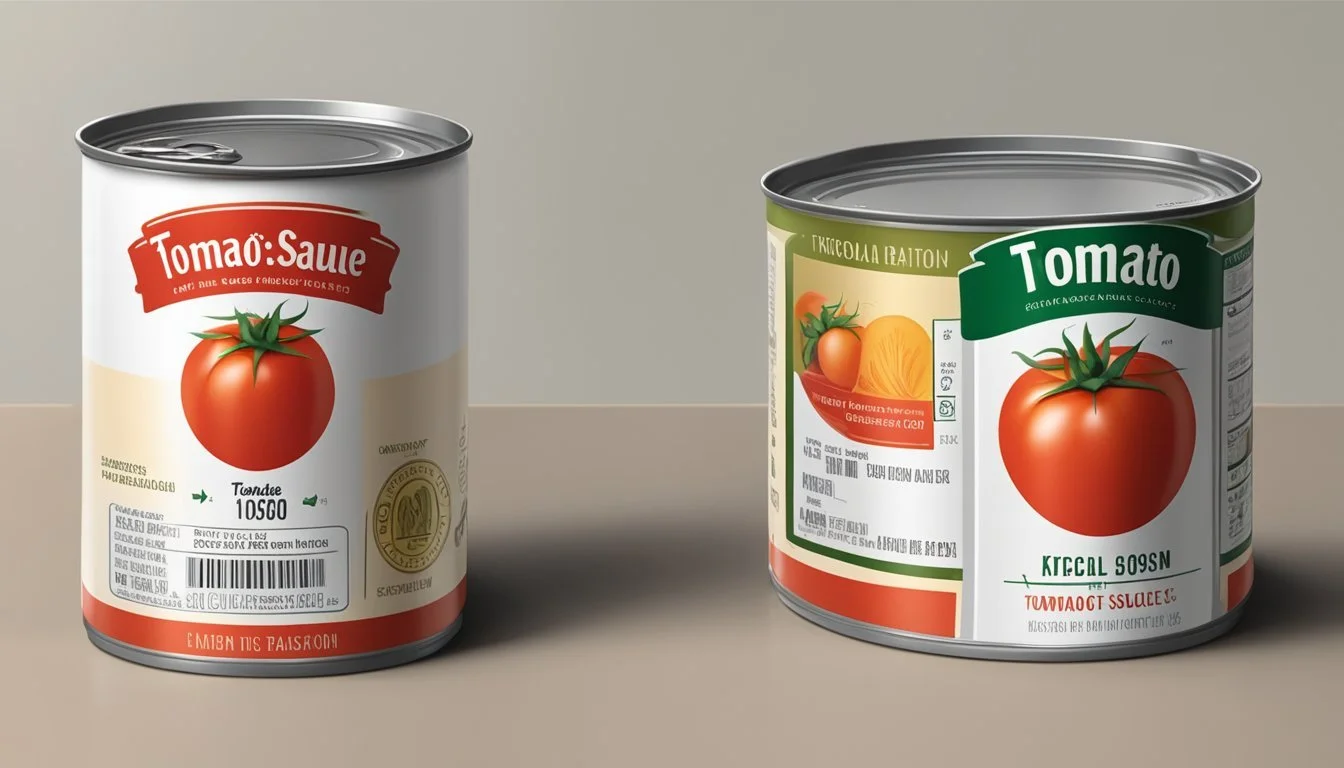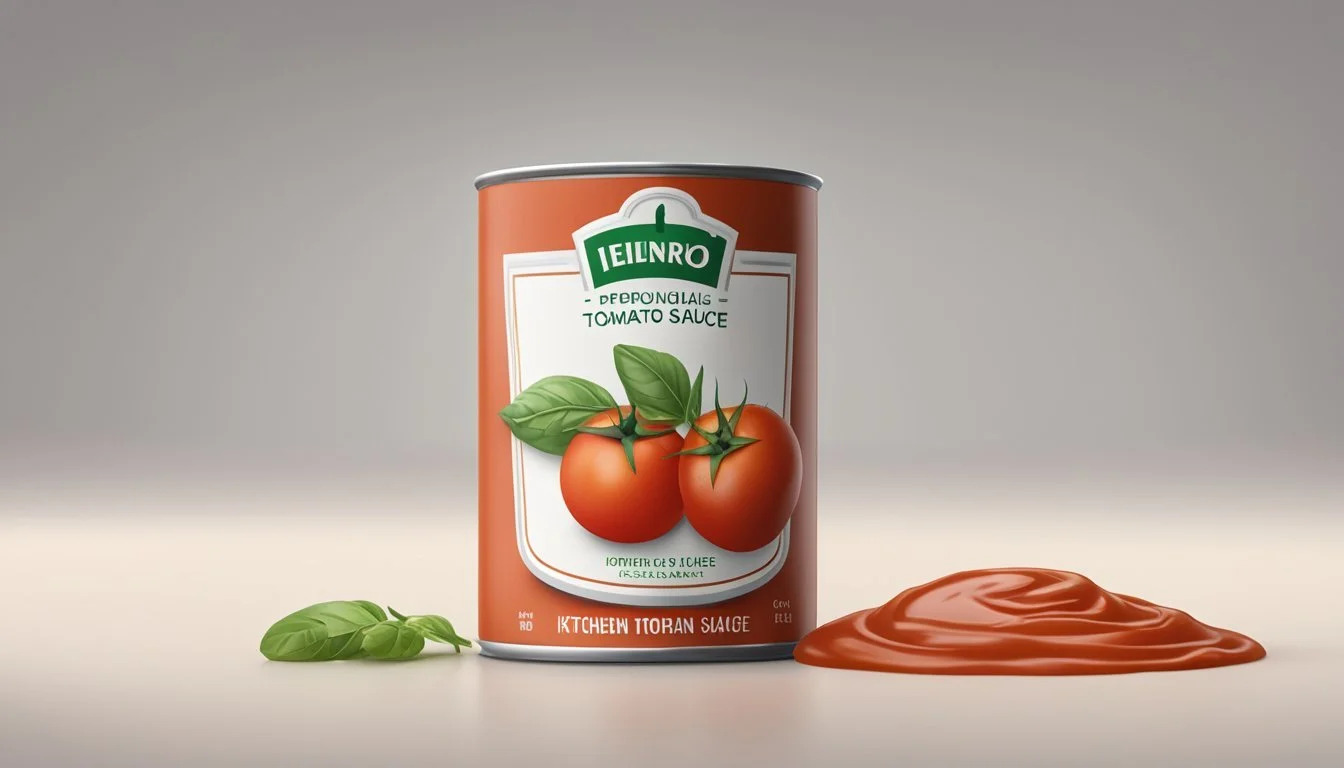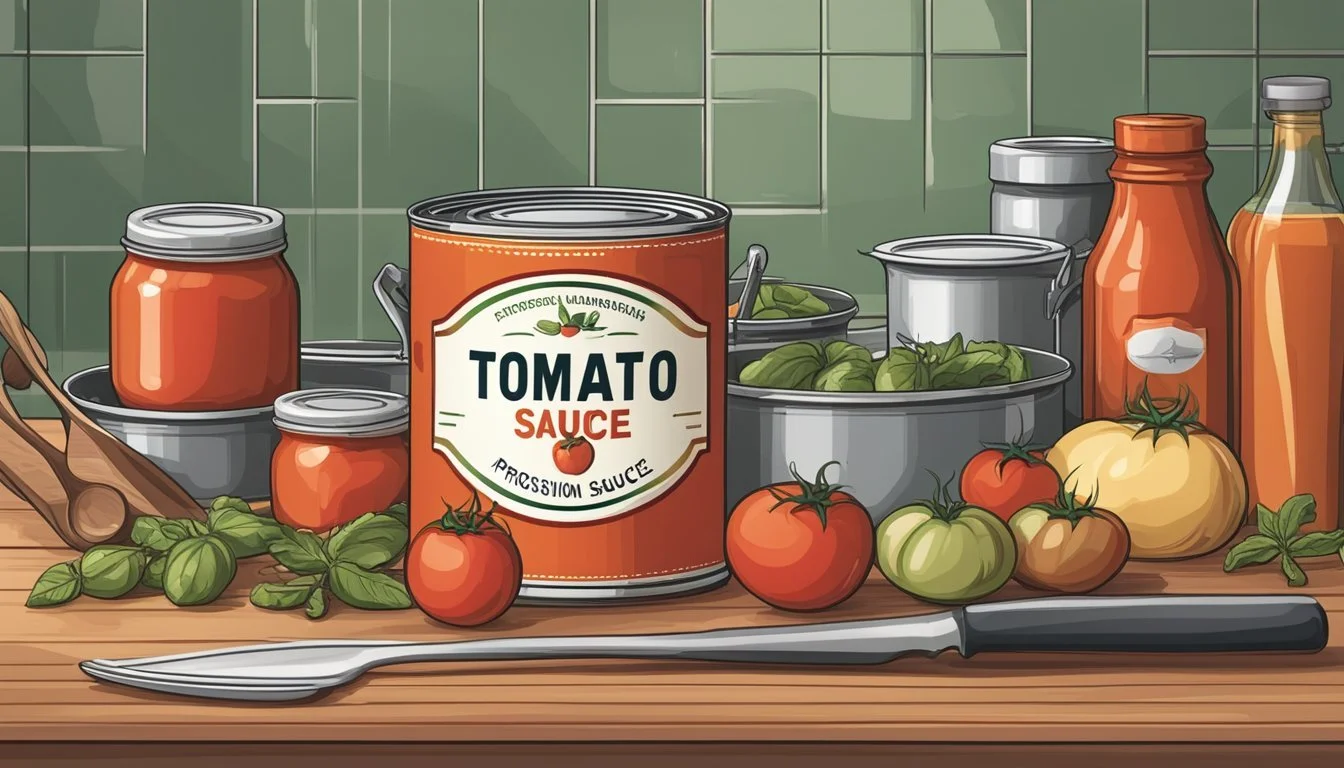How Many Ounces in a Can of Tomato Sauce
Standard Sizes and Conversions
Understanding the quantity of tomato sauce in a can is essential for both home cooks and professional chefs as they follow recipes that call for precise measurements. Tomato sauce is commonly packaged in cans of various sizes, and knowing the conversion between ounces and cups can be invaluable in the kitchen. Typically, a small can of tomato sauce contains 8 ounces, which equals 1 cup. This size is convenient for individual meals or smaller recipes.
When recipes require larger quantities or for bulk cooking, cans of tomato sauce may be referenced by their numerical can size, such as a #10 can. The #10 can is a staple in food service establishments and holds approximately 6 pounds and 9 ounces of tomato sauce, equating to around 102 ounces. Knowing these conversions allows for accurate recipe execution and helps with efficient kitchen inventory management.
While most small cans of tomato sauce settle around the 8-ounce mark, other common sizes one might encounter are 15 ounces and 29 ounces. These measurements prove useful when scaling recipes up or down or substituting different can sizes based on availability. It is important to have a reliable reference for understanding how many ounces are in each can size to ensure the success of any dish that includes tomato sauce.
Understanding Can Sizes
When navigating the world of canned goods, understanding the different can sizes is essential for accurate measurements and recipe conversion. The variety of can sizes can be initially confusing, but a grasp of this nomenclature is invaluable in both home kitchens and professional culinary settings.
Common Can Sizes:
#2 can: This size typically holds about 20 ounces and equates to 2 ½ cups of contents.
#3 can: Slightly larger; used less frequently.
#300 can: Contains about 14 to 16 ounces, approximately 1 ¾ cups.
#303 can: Slightly larger than a #300 can, holding 15 to 17 ounces, or about 2 cups.
#5 can: Used often in foodservice, this can hold varied amounts depending on manufacturer.
#10 can: The largest standard size commonly used in foodservice, it holds about 6 pounds and 9 ounces (approximately 102 ounces) of tomato sauce, translating to roughly 12 ¾ cups.
Each number on a can corresponds to specific dimensions of the can:
Diameter: The first sequence of numbers in can size designation refers to nominal outside diameter in whole inches and sixteenths of an inch.
Height: The second sequence denotes the height of the can in the same fashion.
For instance, a can marked as "303 x 406" would be understood to have a diameter of 3 3/16 inches (3 inches plus 3/16 of an inch) and a height of 4 6/16 inches (4 ⅜ inches).
Cans are designed with these size categories to standardize the volume of contents and ease of calculation for recipes. They come in a variety of shapes too; with volume being constant for a particular number, the dimensions might slightly differ for ease of storage and usage based on what they hold.
Tomato Sauce Fundamentals
Tomato sauce is a culinary staple with various applications and considerable nutritional value. Understanding its ingredients, nutritional content, and preservation can enhance one's cooking and knowledge of food preparation.
Ingredients in Tomato Sauce
Tomato sauce generally contains tomatoes as the primary ingredient, which may be complemented by onions, garlic, and a mix of herbs and spices for added flavor. Salt and sugar are often included to enhance taste, and citric acid might be used to preserve color and freshness.
Nutritional Value of Tomato Sauce
Tomato sauce is rich in vitamin C and offers a range of nutrients. Its nutritional profile includes:
Vitamins: A good source of Vitamin C, it may also contain vitamins A and K, depending on the ingredients used.
Minerals: Contains minerals such as potassium and iron.
Types of Tomato Sauce
Various types of tomato sauce cater to different culinary needs:
Tomato Paste: A highly concentrated form, often used as a base for other sauces.
Tomato Puree: Less thick than paste but smoother than crushed tomatoes.
Crushed Tomatoes: Typically used for chunkier sauces.
Pizza Sauce: Seasoned sauce specifically for pizza, which is more paste-like.
Canning and Preserving Tomato Sauce
The canning and preserving process for tomato sauce involves heating the sauce with lemon juice or citric acid to ensure safe acidity levels before sealing it in cans. Properly canned sauce has a shelf life that can extend for years, which is done by following specific steps, such as sanitizing jars and ensuring airtight lids through the canning process.
Conversions and Measurements
For cooking or purchasing, understanding conversions is key. Commonly, tomato sauce is measured in the following units:
Cups
Fluid Ounces
Grams
Milliliters
A conversion chart might show that a 10-can contains around 102 ounces of tomato sauce, whereas a small can generally holds 8 ounces.
Usage in Recipes
Tomato sauce is a fundamental ingredient that can unlock a plethora of culinary possibilities, providing the base for various pasta dishes (What wine goes well with pasta dishes?), soups, pizza, and more. Its ability to adapt to different consistencies and flavor profiles makes it a staple in any well-stocked pantry.
Tomato Sauce in Pasta Dishes
Pasta dishes frequently incorporate tomato sauce as their core ingredient. From classic spaghetti to hearty lasagna, tomato sauce adds both moisture and a rich flavor. A typical lasagna recipe might call for layering approximately 24 ounces of tomato sauce between sheets of pasta and cheese.
Tomato Sauce in Soups and Stews
Tomato sauce imparts depth and body to soups and stews. It is often simmered to blend flavors and achieve a desired consistency. For instance, one might add a 14-ounce can of tomato sauce to a pot of chili to both thicken the stew and enrich its flavor profile.
Creating a Versatile Pantry with Tomato Sauce
A well-stocked pantry invariably contains cans of tomato sauce. Its versatility is noteworthy, as it can be utilized in a wide range of recipes and cuisines. A simple can of tomato sauce can be the starting point for an array of dishes, making it indispensable.
Adjusting Tomato Sauce Consistency
Achieving desired consistency with tomato sauce involves adjusting its water content. Simmering can thicken a sauce by evaporating excess water, whereas adding water can thin a sauce that is too thick for the recipe at hand.
Cooking with Tomato Sauce
Cooking with tomato sauce often involves a slow simmer, allowing the flavors to meld and the sauce to reduce to its ideal thickness. When cooking, for example, a pot of marinara, one might start with a can of tomato sauce and simmer with herbs until the sauce has deepened in color and flavor.
Making Pizza with Tomato Sauce
Tomato sauce is pivotal in creating the base for pizza sauce. While pre-made pizza sauce is widely available, many prefer to customize their own by seasoning a can of tomato sauce with herbs like oregano and basil, often adjusting the thickness to spread evenly over their pizza dough.
Practical Tips and Techniques
When working with canned tomato sauce, precise measurements and proper storage make all the difference. Not only can they affect the outcome of your recipes, but they also impact food waste and shelf life. Following these methods ensures you utilize every ounce effectively.
How to Measure Tomato Sauce
Measuring tomato sauce accurately is crucial for consistency in recipes. Standard cans of tomato sauce contain 8 ounces, which is equivalent to 1 cup. To measure, one should use a liquid measuring cup for fluids to ensure that measurements align with recipe requirements. It's important to level off the top for an exact reading.
How to Freeze Tomato Sauce
Freezing tomato sauce can extend its shelf life and reduce food waste. Pour leftover sauce into airtight containers or heavy-duty freezer bags, and note that a one-inch space should be left at the top to allow for expansion when it freezes. It's optimal to store frozen tomato sauce for up to 4 months. Always label with the freezing date.
How to Open and Store Cans
To open a can of tomato sauce, use a can opener and work around the edge carefully to prevent any sharp edges. Once opened, if not used entirely, transfer the leftover sauce into a glass or plastic container with a tight-fitting lid. It should then be refrigerated and used within 5-7 days to maintain quality and safety.
Converting Tomato Sauce to Other Forms
Tomato sauce can be converted into different tomato products. For example, to make tomato paste, one must reduce the sauce by simmering to decrease the volume and thicken it. About 3 cups of tomato sauce equals 1 cup of tomato paste. Add water to thin out sauce if you need a purée-like consistency.
Reducing Food Waste with Tomato Sauce
To minimize food waste, use the leftover tomato sauce in various dishes throughout the week or freeze for later use. Keep track of how much sauce recipes require and only open what's necessary. Creative uses like adding to stews or making homemade pizza can utilize any remaining sauce effectively.
Selecting the Right Tomato Sauce
Choosing the right tomato sauce involves looking at the type and brand that best suits your culinary needs. The contents of the can—whether it's sauce, puree, or diced tomatoes—can affect the dish's outcome. Always check the label for sodium content and added seasonings, especially if a recipe calls for plain tomato sauce.
Shopping for Tomato Sauce
When consumers step into grocery stores in search for tomato sauce, they are met with a variety of brand options and can sizes. Brands such as Hunt's provide quality tomato sauce, often made with ingredients like California tomatoes and seasoned for flavor enhancement.
Can Sizes:
Small Can: Typically holds 8 ounces of tomato sauce.
#10 Can: A larger, commercial-sized can containing approximately 6 lbs 9 oz, which is about 102 ounces.
Shoppers looking for tomato sauce should consider the type of recipe they are preparing. For individual or family meals, small cans may suffice, while larger quantities might be required for food services or large gatherings.
Tomato Sauce Varieties:
Plain Tomato Sauce: Ideal as a base for custom seasoning.
Pre-seasoned: Contains added spices and is ready to use.
Here is a brief guide to help understand the typical sizing:
Can Size Weight Approximate Volume Picnic 10 1/2 to 12 oz 1 1/4 cups #10 Can 6 lb 9 oz 102 oz Small Can 8 oz 1 cup
Consumers may also find value in purchasing larger cans if they aim to cook in bulk or store for future use, given that the cost per ounce can be less. It is recommended to verify the specific requirements of the intended recipe before purchasing to ensure the right quantity is selected.
Tomato Sauce Innovations
The food industry continuously evolves, and tomato sauce production is no exception. Advancements in technology have led to significant innovations that enhance the processing and quality of tomato sauces.
In recent years, food processors have implemented high-tech machinery to improve the efficiency of tomato sauce production. These automated systems meticulously control the cooking temperature, consistency, and sterilization to ensure a high-quality product. Modern pasteurization techniques have also advanced, allowing for longer shelf life while preserving the sauce's rich flavor and nutritional value.
Smart packaging is another innovation revolutionizing how tomato sauce is stored and distributed. Manufacturers are now using packaging that extends shelf life, reduces waste, and maintains freshness. Some companies have even introduced pouches equipped with spouts that facilitate easy pouring, reducing the mess and inconvenience associated with traditional cans.
Sustainable practices are becoming the cornerstone of innovation in the tomato sauce industry. Manufacturers are increasingly focusing on organic farming, reducing water usage, and implementing eco-friendly packaging. They invest in technology that supports these initiatives, such as drip irrigation systems and biodegradable materials, to align with a more environmentally conscious consumer base.
In the realm of taste and dietary preferences, innovation has led to a variety of new flavors and formulations. Producers are blending traditional recipes with new ingredients to cater to diverse palates and dietary requirements, like low sodium options for health-conscious consumers.
As the industry looks to the future, one can expect these technological advancements to continue shaping the production and processing of tomato sauce, making it more efficient, sustainable, and diverse in flavor.








